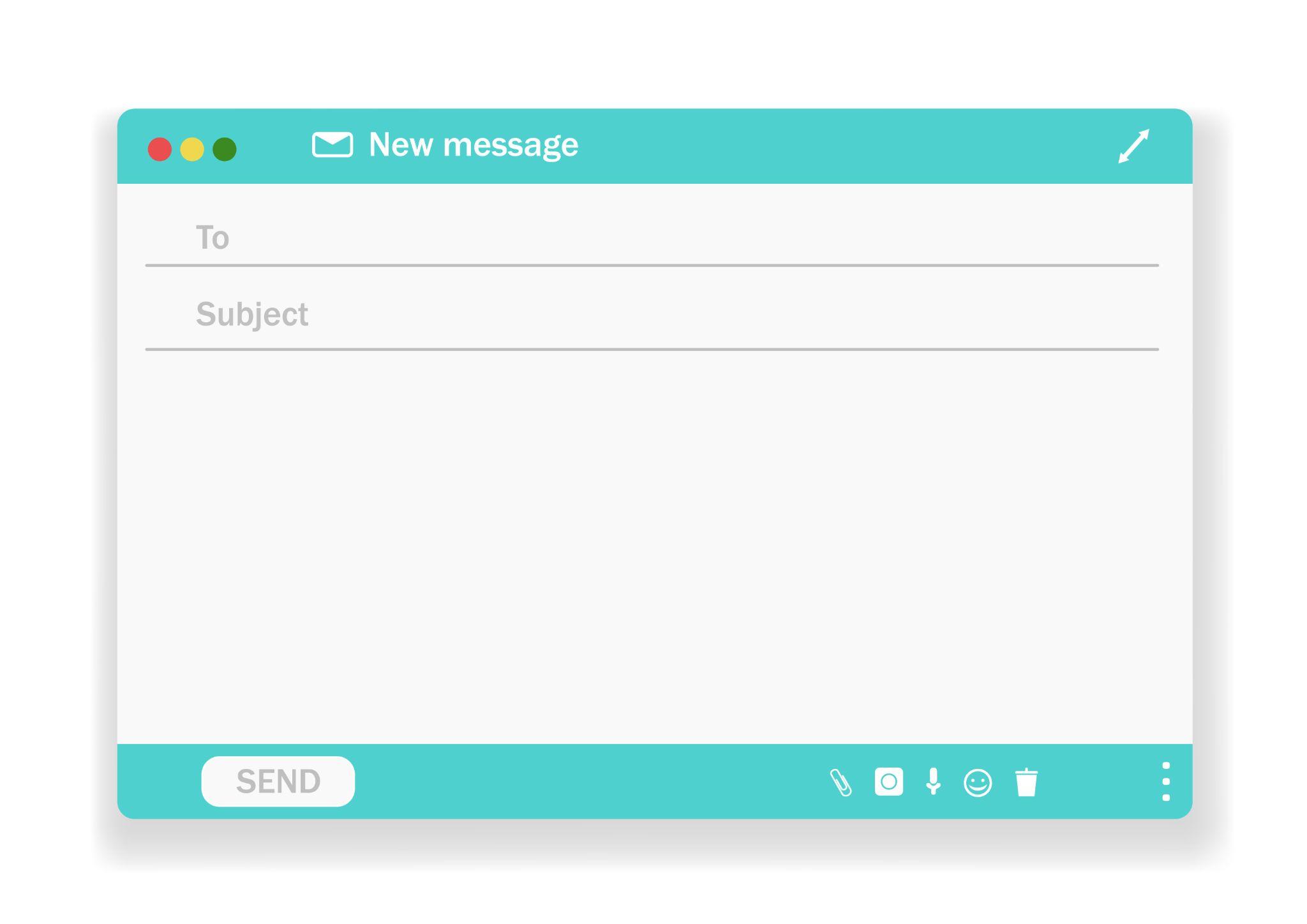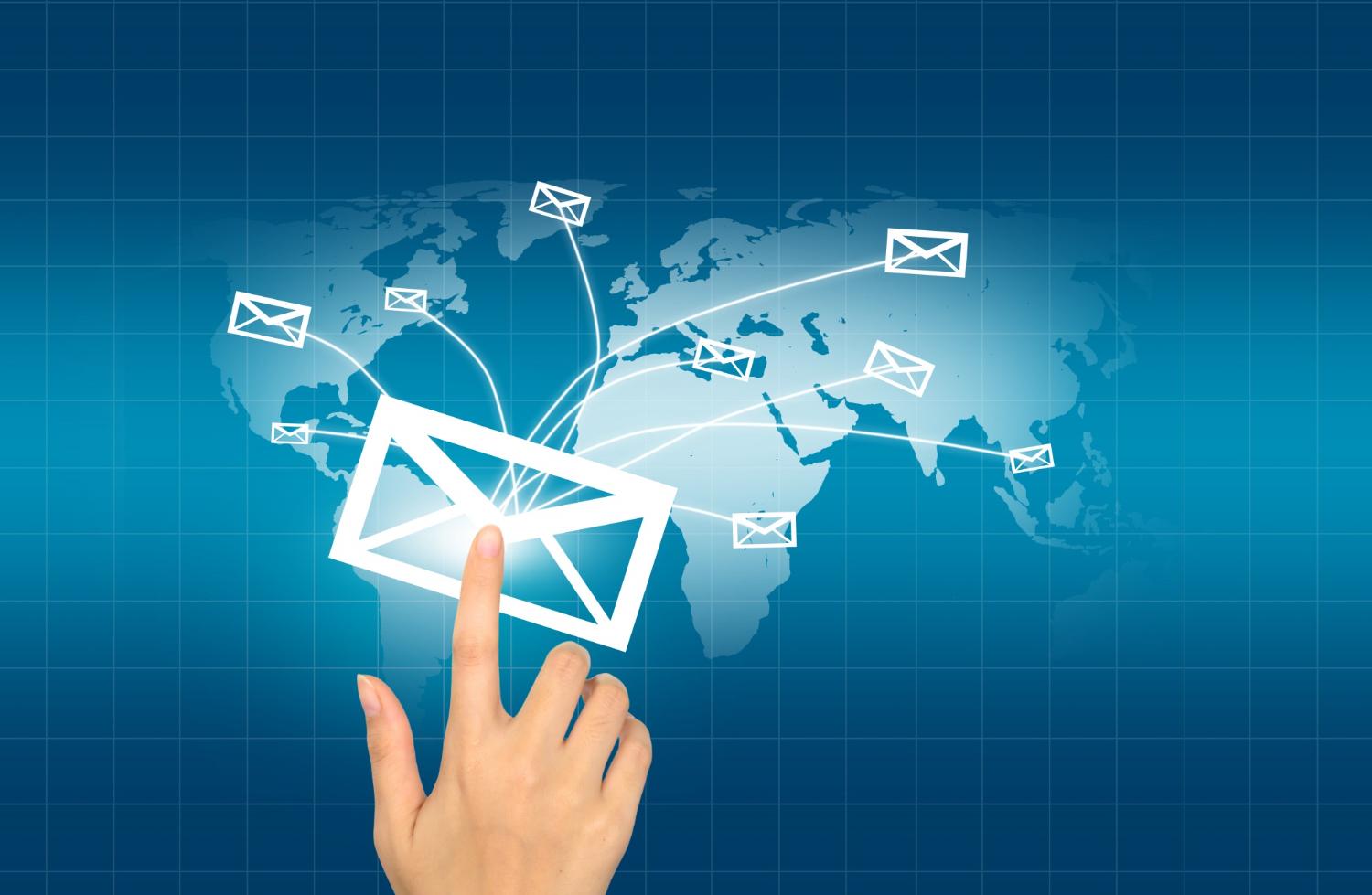Are you looking to make the most out of your email marketing campaigns? Are you wanting to reach a wider audience and create more meaningful connections? If so, then personalization is the way to go! In this blog post, we’ll be discussing the power of personalization in email marketing and how it can help you get better results.
Introduction
Table of Contents
-
Personalization is an integral part of email marketing and an effective way to increase engagement and revenue. It’s the process of customizing emails to specific users based on their preferences and behaviors. Personalization helps create a more tailored experience for each customer, which can result in higher open rates, click-through rates, and conversions.
-
The key to successful email personalization lies in understanding your audience and leveraging data-driven strategies. The more you know about your customers, the more effectively you can personalize their experience. With the right tools and strategies, you can easily create personalized emails that will drive results for your business.
What is email personalization?

-
Email personalization is a powerful marketing tool that can help you deliver targeted and customized content to your prospects and customers. It involves segmenting your leads based on where they are in the buyer’s journey and then sending each segment tailored emails that speak directly to their needs.
-
This strategy can help increase engagement, conversions, and customer loyalty while also helping your emails stand out in an overcrowded inbox. With the right personalization tactics, you can create a much more meaningful connection with your customers and build stronger relationships with them.
What is Personalized Email Marketing?
-
Personalized email marketing is an effective way for businesses to reach their target customers with relevant and engaging content. It involves segmenting leads based on where they are in the customer journey and then sending each segment personalized emails tailored to their specific needs.
-
It can be used to deliver special offers, relevant content, and important information to the right customer at the right time. By leveraging customer data and information, marketers can craft highly targeted messages that drive higher engagement and conversions.
Stats on personalized marketing
-
The stats don’t lie when it comes to the power of email personalization. According to Campaign Monitor, marketers reported a 760% increase in email revenue from personalized and segmented campaigns. HubSpot found that message personalization was the number one tactic used by email marketers to increase engagement rates.
-
Indeed, 95% of brands have witnessed an 8-fold uplift in click-through rates when employing a personalized video as opposed to conventional outbound email campaigns. With personalization being such an important aspect of success in today’s email marketing space, businesses must be able to maximize its effectiveness.
Recent Trends: You Should Know About Email Personalization for Today’s Market

-
Today’s market is constantly evolving, and so too are the personalization trends that drive it. Recent studies have shown that emails with personalized subject lines are 50% more likely to be opened and that 47% of US consumers prefer emails with deals and promotions from brands.
-
71% of consumers feel frustrated when a shopping experience is impersonal, and 76% get frustrated when companies fail to deliver personalized interactions. AI for personalization, omnichannel marketing campaigns, interactivity, and AMP for email are all key trends to be aware of if you’re looking to leverage email personalization and maximize conversions.
-
With the right strategy, personalization can help you engage your audience, capture more conversions and deliver the perfect products to individual customers.
Know Your Audience
-
It is essential to understand your target audience before you start personalizing emails. To get the best results, you should work with your sales team and leverage the data in Email Studio to find important insights. It’s also important to get to know your subscribers and learn more about them.
-
With this kind of information, you can better segment your audience, send triggered emails, use personalized images, and employ dynamic content. In short, you will be able to leverage email personalization to reach your target audience faster and increase engagement.
Use email finders to target the right audience for an email marketing campaign
-
One of the best tools for personalizing emails is an email finder. An email finder is a tool that helps you to find the right emails for your target audience, which can help you to create more personalized campaigns. By using an email finder for Linkedin, you will be able to find the right emails quickly and efficiently.
-
This will save you time and help you reach more people. It also helps you to create more targeted campaigns that are tailored specifically to the needs of your customers. Email finders are especially useful for businesses that want to reach out to a large group of people, such as for promotional campaigns.
How to Segment Your Audience for Better Targeting
-
When it comes to email marketing, segmenting your audience is one of the most important strategies you can use. By breaking down your contacts into smaller, targeted groups, you can send the most relevant emails to each segment. This allows you to tailor the message and content of your emails to better fit their interests and needs.
-
With segmentation, you can also target each segment with special offers and discounts that are more likely to resonate with them. Additionally, segmentation gives you the ability to track the success of each campaign and identify areas for improvement. Ultimately, segmentation leads to higher engagement and more conversions for your email marketing campaigns.
Email Personalization That Supports Your Outreach Strategy
-
Email personalization is an invaluable tool in any email marketer’s arsenal, and when used correctly, it can make your email outreach strategy more effective. Personalizing emails yield higher open rates, click-through rates, and engagement, as users feel that the content is tailored to their interests.
-
By understanding your audience and leveraging segmentation, you can better target and personalize emails to drive higher engagement. Additionally, the timing of your emails matters too. You should consider when each user is most likely to open or read emails for maximum effectiveness.
-
With the right strategies in place, you can take advantage of the power of personalized email marketing to reach your goals.
The Benefits of Personalization in Email Marketing
-
Personalization in email marketing isn’t just about inserting a customer’s name into a generic email—it’s about creating an experience for the customer that feels tailored to them. By using dynamic content, email marketers can craft content that is tailored to each subscriber’s needs and interests.
-
Personalization also helps create stronger connections with your audience as it shows them that you are listening and paying attention to their needs. Moreover, personalization enables you to soar above the flood of inboxes and enhance open rates.
-
Tailored emails provide marketers with an opportunity to target certain recipients with enticing offers or content that is relevant while conveying critical data – ultimately generating engagement and yielding financial benefits.
Hyper-Personalization Strategies
-
Hyper-personalization is taking personalization to the next level. It involves leveraging data and analytics to deliver highly targeted messages to customers at the right time, based on their interests and behaviors. With hyper-personalization, businesses can create a more meaningful connection with their customers and show them that they understand them on a deeper level.
-
This can lead to increased loyalty and trust, as customers feel that their needs are being heard and catered to. To make the most of hyper-personalization, businesses need to have access to detailed customer data such as purchase history, preferences, and interests.
-
AI algorithms can then be used to analyze and interpret this data, enabling businesses to deliver personalized messages and offers to the right customers at the right time.
-
Additionally, businesses should use email finders to generate bulk emails of potential customers who might be interested in their products or services, helping them reach more potential customers with targeted messages.
A/B Testing for Hyper-Personalization
-
A/B testing is an important tool for businesses to optimize their email marketing campaigns and understand the effectiveness of their hyper-personalization strategies. Companies use A/B tests to help them refine their content to appeal to their target audience and maximize the engagement rate.
-
This method allows marketers to test different elements such as subject lines, images, and copy. By using A/B testing, marketers can determine which version of the email is most effective and make tweaks accordingly. Furthermore, A/B testing helps marketers identify areas of opportunity for further personalization.
-
For example, if certain subject lines or images are more successful than others, this could be used as a basis for further testing. Ultimately, A/B tests are a great way for businesses to determine what type of content resonates with their audiences and lead to greater engagement.
The Shift Toward Personalized Emails
-
Personalization is quickly becoming the go-to strategy for email marketing campaigns, and it’s easy to see why. As user attention spans become shorter and more competitive, businesses must strive to stand out from the crowd.
-
Personalization is one of the best ways to do this, with research showing that personalized emails can improve both engagement and conversion rates. This shift toward personalization has led to a rise in advanced A/B testing techniques to further refine campaigns, allowing businesses to create hyper-targeted and personalized emails for each segment of their customer base.
The Need for More Personalized Emails
-
Personalized email marketing is the way of the future. To stay ahead of the competition and remain relevant in the digital marketing landscape, businesses need to start taking advantage of email personalization. Personalizing emails help to build relationships with customers, increases engagement rates, and drives more conversions.
-
To maximize the potential of your email campaigns, it is important to use the data you have collected about your customers to create unique and relevant content that resonates with them. Additionally, it is important to regularly test your emails and use A/B testing to optimize your content for maximum effectiveness.
-
When done correctly, email personalization can help your business stand out from the crowd and increase ROI.
Best Practices for Email Personalization
-
Personalization should never be done in a way that is invasive or intrusive. Best practices for email personalization include using segmentation, dynamic content, and tailored recommendations. Segmentation is the process of dividing your subscribers into smaller groups to target them more effectively.
-
Dynamic content involves creating different versions of the same email for each segment, allowing you to customize the message for each group. Tailored recommendations are based on analytics and past purchases, enabling you to make personalized product suggestions that match the customer’s interests and needs. By following these best practices, you can create highly targeted campaigns that will get results.
Examples of Personalized Email Campaigns
-
For businesses looking for inspiration and examples on how to personalize their email campaigns, there are plenty of great examples out there. From triggered emails to segmentation strategies, there are numerous ways to craft a personalized email campaign.
-
One example is a stock trading platform that sends out emails regarding stock market news based on what users have previously searched for. Another example is a travel website that sends out emails including flight prices and deals based on a user’s previous searches and preferences.
-
These are just two of the many great examples of personalized email campaigns that businesses can implement to increase engagement and conversions.
Essential Elements for Personalized Email Campaigns
-
Once you have chosen the right tools to personalize your emails, there are essential elements to consider when creating personalized email campaigns. These elements can include segmentation and content, but they should also include things like call-to-action (CTA) buttons, dynamic content, and custom images.
-
Segmentation helps you group subscribers into relevant categories and send them content based on their interests. Content should be relevant to the reader’s interests as well as tailored to their behavior. Dynamic content allows you to change the content a subscriber sees depending on their interests or past behavior.
-
CTA buttons let your subscribers know what action you want them to take, such as visiting a webpage or downloading an ebook. Custom images can help show that your emails are unique and tailored to each subscriber’s individual needs. When used correctly, these elements can help you create powerful email campaigns that drive engagement and revenue.
Write a Catchy Subject Line

-
Personalization in email marketing isn’t just about inserting a customer’s name into a generic email—it’s about creating an experience for the customer that feels tailored to them. By using dynamic content, email marketers can craft content that is tailored to each subscriber’s needs and interests.
-
Personalization also helps create stronger connections with your audience as it shows them that you are listening and paying attention to their needs. Moreover, personalization enables you to soar above the flood of inboxes and enhance open rates.
-
Tailored emails provide marketers with an opportunity to target certain recipients with enticing offers or content that is relevant while conveying critical data – ultimately generating engagement and yielding financial benefits.
Optimizing Email Content
-
Optimizing email content is an essential piece of the puzzle when it comes to using personalization in email marketing. Crafting personalized emails for customers requires understanding their preferences, interests, and behavior.
-
By segmenting customers into groups and creating content tailored to their interests, marketers can create more relevant experiences that will drive engagement and conversions. To maximize the effectiveness of email campaigns, marketers should also utilize A/B testing to determine the best messaging and content for each segment.
-
This allows them to fine-tune their message to ensure they’re providing the most impactful experience for their customers. By taking advantage of these strategies, marketers can ensure their emails are highly effective and drive more sales in 2023.
Keeping your lists fresh
-
When it comes to email marketing, personalization is the key to success. To ensure that you’re always reaching your audience with fresh content, it’s important to keep your lists fresh. With the right data streams and segmentation, you can tailor messages to customers based on their specific wants, inclinations, and buying habits.
-
MailDirect has streamlined the process of managing large lists by automating tasks related to keeping them current so that fresh campaigns are never sent out to any unsubscribed contacts. This ensures that your target audiences remain reliable and up-to-date for accurate messaging.
The Effect of Timing on Your Emails
-
When it comes to email marketing, personalization is the key to success. To ensure that you’re always reaching your audience with fresh content, it’s important to keep your lists fresh.
-
With the right data streams and segmentation, you can tailor messages to customers based on their specific wants, inclinations, and buying habits.MailDirect has streamlined the process of managing large lists by automating tasks related to keeping them current so that fresh campaigns are never sent out to any unsubscribed contacts.
-
This ensures that your target audiences remain reliable and up-to-date for accurate messaging.
Tools for Automating Personalized Email Marketing

-
In today’s digital world, personalizing customer communication is key to success. Automating personalized email marketing is a great way to ensure your messages are always on-brand, consistent, and relevant to your customers.
-
There are a few different tools available that can help you automate personalized email campaigns, including email finders, website builders, and analytics software. Email finders make it easy to generate bulk emails by using customer data points such as name, age, location, and interests. Website builders allow you to create custom emails that are tailored to each customer.
-
Finally, analytics software can be used to track and evaluate the performance of personalized email campaigns. By leveraging these tools for automated personalized email marketing, you can ensure your messages are always on-brand and relevant to your customers.
How to Measure the Success of Personalized Email Campaigns

-
As marketers, it’s important to measure the success of our personalized email campaigns. Tracking metrics such as open rates, click-through rates, email bounce rates, and conversions can help us understand how effective our personalization strategies are.
-
Additionally, we can use A/B testing to determine which messages and subject lines resonate with our audience. Having visibility into these metrics allows us to make adjustments to our messaging and optimize our campaigns for the best possible results.
Personalization Strategies for Ecommerce
-
E-commerce businesses can use personalization to increase customer loyalty, boost customer engagement and drive sales. Personalized emails can be used to target customers with special offers, relevant content, and important information.
-
A great way to do this is by segmenting customers based on past purchases, browsing history, location, or customer demographics. This will enable e-commerce businesses to send personalized emails tailored to the individual needs of each customer.
-
Additionally, they can use data-driven analytics to deliver hyper-personalized messages to the right customers at the right time. Furthermore, they should also be aware of personalization best practices and use tools that help automate personalized email campaigns. This will help them create more engaging emails and measure the success of their campaigns.
Personalization Tips for Startups
-
For startups, personalization can be an incredibly effective tool for building relationships with customers. By using email personalization to create a more tailored approach to customer engagement, startups can strengthen their customer relationships and increase their customer loyalty.
-
Personalizing emails with names, locations, and preferences can create a more meaningful connection with customers and make them feel appreciated and valued. Additionally, by understanding the customer’s journey and segmenting their email list accordingly, startups can create more personalized email campaigns to target their customers at the right time and place.
-
Lastly, using automated tools such as email finders can help startups generate bulk emails quickly and efficiently. Personalizing emails with these automated tools can help startups save time while still providing quality service to their customers.
The End Goal of Email Marketing
-
The ultimate goal of email marketing in 2023 is to create an engaging and personalized experience for the customer. It’s important to understand that segmentation and personalization need to be paired with relevant content if you want to make a lasting impression.
-
A/B testing can help you optimize your email content, making sure that it resonates with your target audience. By leveraging data-driven insights, you can craft messages that get customers excited about what you have to offer. With the right strategy in place, you can maximize the impact of your email campaigns and build strong relationships with customers.
Conclusion
-
In conclusion, personalized email marketing is a powerful tool for businesses of all sizes to create meaningful customer relationships and get better results from their campaigns. It requires an understanding of customer needs to deliver content that is tailored to those needs.
-
By leveraging dynamic content, segmentation, automation, and other personalization techniques, businesses can create more effective emails that convert more leads and generate higher ROI. To ensure success, marketers should use the right tools for automating personalized email campaigns, track results and measure success, and continually test and refine their strategies.
-
With the right approach, personalized email marketing can be a powerful tool for building lasting relationships with customers.
